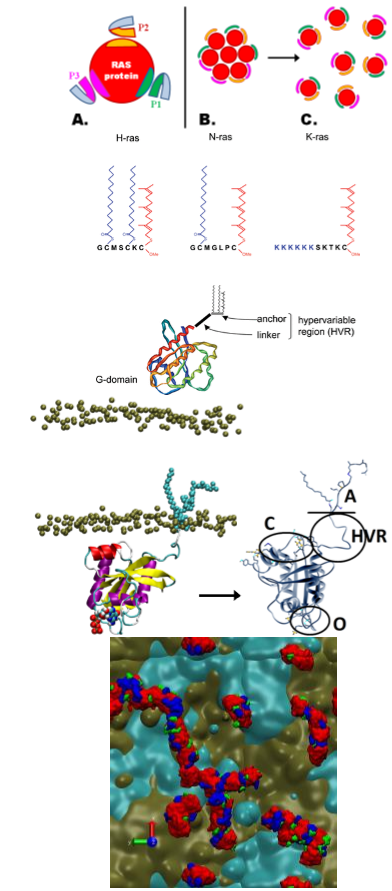
|
Project financed by UEFISCDI: PN II Program - Tinere Echipe de Cercetare
Project Type : Research Projects for Stimulating Creation of Young Research Teams Project Code: PN-II-RU-TE-2014-4-2418 Contract No.: 118/01.10.2015 Project Time Span: 01.10.2015 — 30.11.2017
Principal Investigator: Dr. Lorant Janosi
Project Abstract: Ras proteins mediate a wide variety of signal transduction pathways that regulate cell growth, proliferation and differentiation. These proteins are small GTPases acting as binary switches between the GDP-bound “off” and the GTP-bound “on” states. Oncogenic mutations of Ras renders them constitutively active and are associated with ~15% of all human cancers and up to 90% in specific tumors. Current strategies for developing drugs targeting Ras mutants had little success. Experiments and computer simulations alike showed that membrane-bound Ras proteins form non-overlapping dynamic nano-sized subdomains (nanoclusters) in an activation state-/isoform-dependent manner. Nanoclusters are protein-lipid assemblies serving as exclusive sites for effector recruiting and signal activation. The main objective of this application is the development of a new approach on finding potential drugs against oncogene Ras. The ground-breaking nature of this approach is that it exploits the dynamic nature of Ras nanoclusters and the key role of their stability in signal transduction. We will computationally determine Ras self-association binding sites and their binding strengths. The results will be used to design new lipid-modified peptides (LMPs) which, due to their designed features, would disrupt Ras nanoclusters. Since Ras nanoclusters are highly dynamic in nature, the peptide-Ras interaction should disrupt nanocluster’s stability and hence the signal output. |



